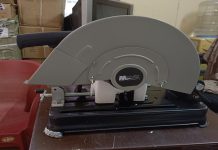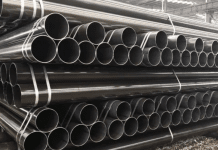Forging is a manufacturing process that involves shaping metal through the application of heat and pressure. To ensure the production of high-quality forged components, a few factors need to be considered and carefully managed. By addressing these key factors, manufacturers can enhance the quality, integrity, and performance of the forged products.
Achieving high-quality forgings is a critical objective in the manufacturing industry. You have to consider several factors to ensure the desired strength, dimensional accuracy, and overall performance of forged components. These factors encompass various stages of the precision forging process, from material selection and preheating to die design and post-forging treatments.
Is It Possible To Improve The Quality Of Forging?
Absolutely! Improving the quality of forging is not only possible but also essential in today’s competitive manufacturing landscape. By implementing certain measures and adopting best practices, manufacturers can enhance the strength, durability, and overall performance of forged components. One of the key areas to focus on is the selection of high-quality materials.
Using premium-grade metals that meet the required specifications and standards is crucial in ensuring the desired mechanical properties of the forgings. Another important factor is the design of the forging process. Optimal die design, including cavity geometry, parting lines, and draft angles, plays a significant role in achieving precise dimensions and minimizing the occurrence of defects like cracks and porosity.
Factors to Consider
Improving the quality of forged components requires careful consideration of various factors throughout the forging process. Here are some key factors to consider:
Material Selection
Choosing the right material is essential for achieving the desired mechanical properties and performance of the forged component. Factors such as strength, ductility, and heat resistance should be considered based on the specific application requirements.
Die Design
The design of the forging die plays a crucial role in shaping the material and maintaining dimensional accuracy. Proper die design ensures uniform deformation, reduces the risk of defects, and enhances the overall quality of the forged component.
Heating and Temperature Control
Proper heating of the material is important to achieve the required forging temperature and ensure uniformity throughout the work piece. Accurate temperature control helps prevent overheating or under heating, which can lead to material defects or improper forging.
Lubrication
The use of lubricants during the forging process reduces friction between the material and the die, minimizing the risk of surface defects and improving the flow of the material. Proper lubrication helps achieve a better surface finish and dimensional accuracy.
Heat Treatment
Post-forging heat treatment processes such as annealing, quenching, and tempering are often necessary to enhance the mechanical properties and remove residual stresses from the forged component. Proper heat treatment improves the strength, hardness, and toughness of the final product.
Quality Testing and Inspection
Implementing rigorous quality testing and inspection procedures ensures that the forged components meet the required specifications and standards. Non-destructive testing techniques, dimensional inspections, and material analysis are commonly employed to verify the quality of the forgings.
CXINFORGING: Get Forged Components Now
When it comes to obtaining high-quality forged components, CXINFORGING is your trusted partner. With a solid reputation in the industry and a commitment to excellence, CXINFORGING is a leading provider of forged components for various applications. CXINFORGING offers a wide range of forged components that are designed to meet the highest standards of quality, durability, and performance.
CXINFORGING stands out for its expertise in forging technology and its dedication to customer satisfaction. With a team of skilled professionals and state-of-the-art manufacturing facilities, CXINFORGING ensures that each forged component is meticulously crafted with precision and attention to detail.
Ending Remarks
In conclusion, enlisting and considering the various factors to improve the quality of forging is of utmost importance in the manufacturing industry. By understanding the classification of forging dies, optimizing the forging process design, ensuring proper die processing, and selecting appropriate mold materials, manufacturers can enhance the overall quality.











